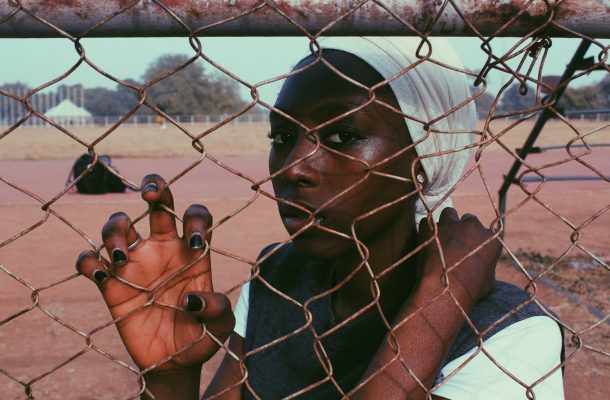Tabi on racial matters: Black-enslaved-women and their visions of freedom during the 19th century

Society’s construction of women has been well established through a patriarchal lens over centuries. This often means a woman’s existence is linked to, and somehow dominated by a male’s stereotype of her.
For example, in and around the seventeenth century, Shakespeare who is said to have had vested interest in transatlantic slavery, wrote plays to give permission in the arts sphere to degrade, ridicule and sexualise women in the public domain.
But Shakespeare is good for us?
Yes, it is true that we have institutionalised Shakespeare in our schooling systems, from an early age we indoctrinate the importance of the study of the English language. Shakespeare’s work still challenges us, inspires, teaches and humours us today.
However, many of the colonial tales wrote by Shakespeare, as depicted in the Taming of the Shrewd, for instance, characterises women’s emergence from patriarchal rule and became widespread entertainment for colonial masters.
Although Shakespearean tales are not the sole culprit of the way in which women are epitomised, but in the Taming of the Shrewd play, an image of a treasured woman is described as valued when she is gentle, powerless and meek-like. The play’s portrayal of womanhood was to serve the male counterpart through domination, sex, and duty.
A performative that can only be categorised as misogyny in today’s times.
How possible was gender equality for Black-enslaved-women?
Constraints placed on women through patriarchal and societal stereotypes came into full view during the enslavement of Blacks in America in the nineteenth century.
Shatema Threadcraft saw Black women’s predicaments during the slave liberation and lamented her reflections when she commented whether politically Black women could really be free, self-govern and decide for themselves to be married or not.
The Black women’s struggle with these constraints were real, in the way in which they were subjugated, perceived and constructed.
Liberation at that time meant very different political operations that were available for enslaved men, such as their ability to just escape without the care of little children were completely alien, improbable and unavailable to Black-enslaved-women.
Many scholars including Du Bois have talked about the plight of Black-enslaved-women having a unique oppression by the systematic sexual assaults repeatedly perpetrated on them.
Procreation in intimate bondage through rape, violence and sexism became Black-enslaved-women’s reality in an ongoing basis.
Black-enslaved-women were used, raped by their slave masters and gave birth.
These children were to be added to the number of the slave workers for the continuation of the slavery enterprise. In a sense, these children were born not out of the will of these women, yet they could also never claim the child as theirs to keep. This is because the women were raped to produce human slave bodies to service the slave empire!!
A cycle of despair in this reproductive violence, pain of rape, pain in childbirth and pain to lose the child to slavery, is an unthinkable prospect for any woman.
Throughout history and particularly writings by Frederick Douglas, the slaves yearned to be freed, and regarded freedom as an ultimate reward to behold from oppression, torture and captivity. Whilst many enslaved men were able to liberate themselves from captivity, this was never possible for their female counterparts.
An act of one Black-enslaved-woman speaks volumes
To the question of Margaret Garner, a Black-enslaved-woman, and her act of resistance to strike, kill and destroy (her own daughters) children born by her, illustrates a symbol of a desperate woman in great need of help and escape from, to what one could view as cyclical abuse.
The system of enslavement, I believe produced the act of Margaret Garner as summarised here: “Garner’s infanticide holds tremendous symbolic significance for all who interpret Transatlantic slavery and the statements on freedom, both verbal and non, that the system’s captives produced” explained by Shatema Threadcraft.
This could be further evidence that her act is more resistance against a cycle of repeated abuse by the colonial rule, knowing that her body was used politically as a breeding machine to enhance the enslaved herd. To end this unending triple trauma – rape, going through the pain of childbirth, and losing the children to potential further abuse, compelled her to commit a murder of her own children in an effort to ultimately end the cruelty.
How do we reflect upon the plight of Black-enslaved-women?
To inject thoughts on Margaret Garner, a Black-enslaved-woman, relies on a distinction between two different kinds of action.
Firstly, it could be viewed utilitarian, an action of this kind is directed by pre-meditation and calculation by the means-ends framework. A utilitarian would look at Garner’s act and try to understand it based on whether her act was justified, that is, means toward the end of freedom?
I must admit, as a Black woman who continue to experience abuse of some kind through racism, I couldn’t resist but to look at it from a mother’s standpoint, I doubt that at that time, Garner would have had the appropriate apparatus and the capacity to envisage the real tangible outcomes of her actions, but I could sense it could have been understood as utility, a means-ends logic.
Secondly, to think of Garner’s act with a different understanding could frame the murder in another light, to be understood as a performative act? That is, an act that has no end outside of itself. An act which fully exhausts its meaning as long as it is still active.
These kinds of acts require a different kind of preface to determine their legitimacy. I think that performative acts require us to consider not what is actually done (murder) but what is enacted, or meant, or demonstrated.
In any case, if one looks at the act from the perspective of the child, it’s hard to get away from Garner’s act other than it be characterised as a murder. If the murder is contextual and the act is transformed from murder into an act of resistance, it could be understood as a performative act.
Although, I am still with the view that Garner’s action is produced and as a direct result of the system of slavery.
One can also argue on the question of personal responsibility.
Is violence a human nature? Subsequently, what will freedom born out of violence mean? If violence is the fundamental conception of resistance or freedom as also witnessed in Frantz Fanon’s writings, then are we comfortable as civilised citizens to sanction it?
I am however convinced that sexism in this regard created barriers for Black-enslaved-women’s freedom and the system of slavery’s reproductive violence further placed constraints on these women. It ultimately striped away any social safety net that could have been possible for them.
The United Nations Sustainable Development Goals no.5 encapsulates the empowerment of all women and girls irrespective of their race.
In our world today, we have the capacity to ensure that Black female voices are present in the gender equality debates so that we do not slip back into history and commit other forms of oppression on these women.
Black women’s absence in the gender equality debate can have significance implications for the purposes of the movement broadly as it could reinforce existing inequalities.
Gloria Tabi is a Master of Research Student specialising in Social Analysis on Race, Racism, Inequalities and Anti-Racism within Humanities, Communications and Arts at Western Sydney University. Gloria is an Author of Inclusive Teams & Workplaces: Everyone Wins!! She is the Director and Founder of EVERYDAY INCLUSION. As a Black African-Australian woman, Gloria brings well-grounded knowledge and experience of the impacts presented in race and racism. She is also the founder of the Founder of VoiceEveryDay Racism.com.












